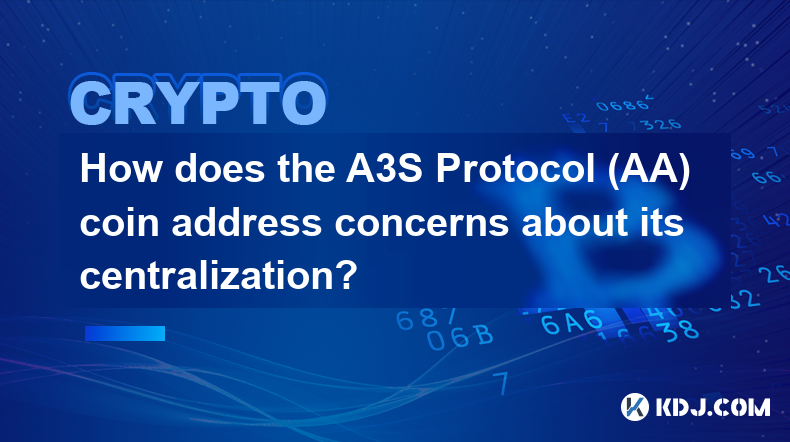-
 Bitcoin
Bitcoin $108,338.0981
-0.13% -
 Ethereum
Ethereum $2,566.4077
1.16% -
 Tether USDt
Tether USDt $1.0001
-0.01% -
 XRP
XRP $2.2841
-2.59% -
 BNB
BNB $658.5241
-0.17% -
 Solana
Solana $150.3819
-1.08% -
 USDC
USDC $0.9999
-0.01% -
 TRON
TRON $0.2864
-0.24% -
 Dogecoin
Dogecoin $0.1694
0.24% -
 Cardano
Cardano $0.5813
-0.72% -
 Hyperliquid
Hyperliquid $37.8292
-4.60% -
 Bitcoin Cash
Bitcoin Cash $503.3593
1.69% -
 Sui
Sui $2.8784
-0.69% -
 Chainlink
Chainlink $13.4784
-0.43% -
 UNUS SED LEO
UNUS SED LEO $9.0793
-0.27% -
 Stellar
Stellar $0.2537
-0.41% -
 Avalanche
Avalanche $18.0047
-0.23% -
 Shiba Inu
Shiba Inu $0.0...01181
1.56% -
 Hedera
Hedera $0.1608
0.49% -
 Toncoin
Toncoin $2.7568
-0.93% -
 Litecoin
Litecoin $86.4121
-0.20% -
 Monero
Monero $313.7273
-0.86% -
 Polkadot
Polkadot $3.3715
-0.66% -
 Dai
Dai $1.0001
0.01% -
 Ethena USDe
Ethena USDe $1.0004
0.03% -
 Bitget Token
Bitget Token $4.2902
-0.54% -
 Uniswap
Uniswap $7.5361
2.73% -
 Aave
Aave $285.6090
-0.55% -
 Pepe
Pepe $0.0...09958
0.28% -
 Pi
Pi $0.4560
-0.65%
How does the A3S Protocol (AA) coin address concerns about its centralization?
2024/12/28 01:31

Key Points:
- The A3S Protocol employs a decentralized consensus mechanism based on Proof-of-Stake (PoS) and Delegated Proof-of-Stake (DPoS).
- Users can participate in the network by staking AA tokens, influencing block production and protocol governance.
- The protocol incorporates a reputation system to assess the reliability and trustworthiness of network participants.
- Decentralized applications (dApps) built on the A3S Protocol benefit from inherent decentralization, security, and scalability.
Addressing Centralization Concerns
1. Decentralized Consensus Mechanism:
- The A3S Protocol employs a PoS consensus where nodes validate transactions and add new blocks to the blockchain based on the number of AA tokens they hold.
- The higher the stake, the greater the probability of block creation and issuance rewards.
- DPoS is implemented as a second layer, where a group of delegates is elected by stakeholders to produce blocks and manage protocol parameters.
2. Stakeholder Participation and Governance:
- Token holders can actively participate in network decision-making by staking their AA coins.
- Stakeholders vote on proposals regarding protocol upgrades, fee adjustments, and other governance matters.
- The distribution of voting power among stakeholders ensures a balanced and decentralized decision-making process.
3. Reputation System:
- The A3S Protocol includes a reputation system to assess and incentivize participants' reliability and contributions.
- Participants can earn reputation points based on their participation in block production, voting, and other network activities.
- Validators with higher reputation receive priority in block production and are more likely to be selected as delegates.
4. Decentralized Application Support:
- The A3S Protocol is a substrate-based blockchain that supports the development and deployment of decentralized applications (dApps).
- dApps built on the A3S Protocol inherit the platform's decentralization, security, and scalability benefits.
- Developers can leverage the protocol's features to create applications that empower end-users and minimize central control.
FAQs:
Q: How does the A3S Protocol differ from other PoS-based networks?
A: A3S employs a hybrid PoS and DPoS consensus, allowing stakeholders to directly influence block production and participate in governance. It also incorporates a reputation system to incentivize network reliability.
Q: Can anyone become a delegate in the A3S Protocol?
A: Delegates are elected based on their stake and reputation. To become a delegate, users must actively participate in the network and maintain a high reputation score among stakeholders.
Q: What are the benefits of using dApps built on the A3S Protocol?
A: dApps on A3S benefit from the protocol's decentralized infrastructure, making them resistant to censorship and unauthorized control. They also inherit the platform's security and scalability advantages, ensuring data integrity and performance.
免責聲明:info@kdj.com
所提供的資訊並非交易建議。 kDJ.com對任何基於本文提供的資訊進行的投資不承擔任何責任。加密貨幣波動性較大,建議您充分研究後謹慎投資!
如果您認為本網站使用的內容侵犯了您的版權,請立即聯絡我們(info@kdj.com),我們將及時刪除。
- 加密貨幣將於2025年爆炸:揭示最大的回報電位
- 2025-07-09 05:30:12
- 無形的女人在《壟斷》中偷走了節目:聲稱您的令牌!
- 2025-07-09 05:30:12
- 加密價格波動:鯨魚購買和觀看的預測
- 2025-07-09 05:10:12
- Chainlink的價格動力:鯨魚的積累信號潛在的突破
- 2025-07-09 05:10:12
- Iron Maiden,Eddie和The Royal Mint:在硬幣中慶祝的金色禧年
- 2025-07-09 05:15:12
- 裁員,AI和新聞探險家:導航技術海嘯
- 2025-07-09 05:15:12
相關知識

How to customize USDT TRC20 mining fees? Flexible adjustment tutorial
2025-06-13 01:42:24
<h3>Understanding USDT TRC20 Mining Fees</h3><p>Mining fees on the TRON (TRC20) network are essential for processing transactions. U...

USDT TRC20 transaction is stuck? Solution summary
2025-06-14 23:15:05
<h3>Understanding USDT TRC20 Transactions</h3><p>When users mention that a USDT TRC20 transaction is stuck, they typically refer to ...

How to cancel USDT TRC20 unconfirmed transactions? Operation guide
2025-06-13 23:01:04
<h3>Understanding USDT TRC20 Unconfirmed Transactions</h3><p>When dealing with USDT TRC20 transactions, it’s crucial to understand w...

How to check USDT TRC20 balance? Introduction to multiple query methods
2025-06-21 02:42:53
<h3>Understanding USDT TRC20 and Its Importance</h3><p>USDT (Tether) is one of the most widely used stablecoins in the cryptocurrenc...

What to do if USDT TRC20 transfers are congested? Speed up trading skills
2025-06-13 09:56:41
<h3>Understanding USDT TRC20 Transfer Congestion</h3><p>When transferring USDT TRC20, users may occasionally experience delays or co...

The relationship between USDT TRC20 and TRON chain: technical background analysis
2025-06-12 13:28:48
<h3>What is USDT TRC20?</h3><p>USDT TRC20 refers to the Tether (USDT) token issued on the TRON blockchain using the TRC-20 standard....

How to customize USDT TRC20 mining fees? Flexible adjustment tutorial
2025-06-13 01:42:24
<h3>Understanding USDT TRC20 Mining Fees</h3><p>Mining fees on the TRON (TRC20) network are essential for processing transactions. U...

USDT TRC20 transaction is stuck? Solution summary
2025-06-14 23:15:05
<h3>Understanding USDT TRC20 Transactions</h3><p>When users mention that a USDT TRC20 transaction is stuck, they typically refer to ...

How to cancel USDT TRC20 unconfirmed transactions? Operation guide
2025-06-13 23:01:04
<h3>Understanding USDT TRC20 Unconfirmed Transactions</h3><p>When dealing with USDT TRC20 transactions, it’s crucial to understand w...

How to check USDT TRC20 balance? Introduction to multiple query methods
2025-06-21 02:42:53
<h3>Understanding USDT TRC20 and Its Importance</h3><p>USDT (Tether) is one of the most widely used stablecoins in the cryptocurrenc...

What to do if USDT TRC20 transfers are congested? Speed up trading skills
2025-06-13 09:56:41
<h3>Understanding USDT TRC20 Transfer Congestion</h3><p>When transferring USDT TRC20, users may occasionally experience delays or co...

The relationship between USDT TRC20 and TRON chain: technical background analysis
2025-06-12 13:28:48
<h3>What is USDT TRC20?</h3><p>USDT TRC20 refers to the Tether (USDT) token issued on the TRON blockchain using the TRC-20 standard....
看所有文章

























































































